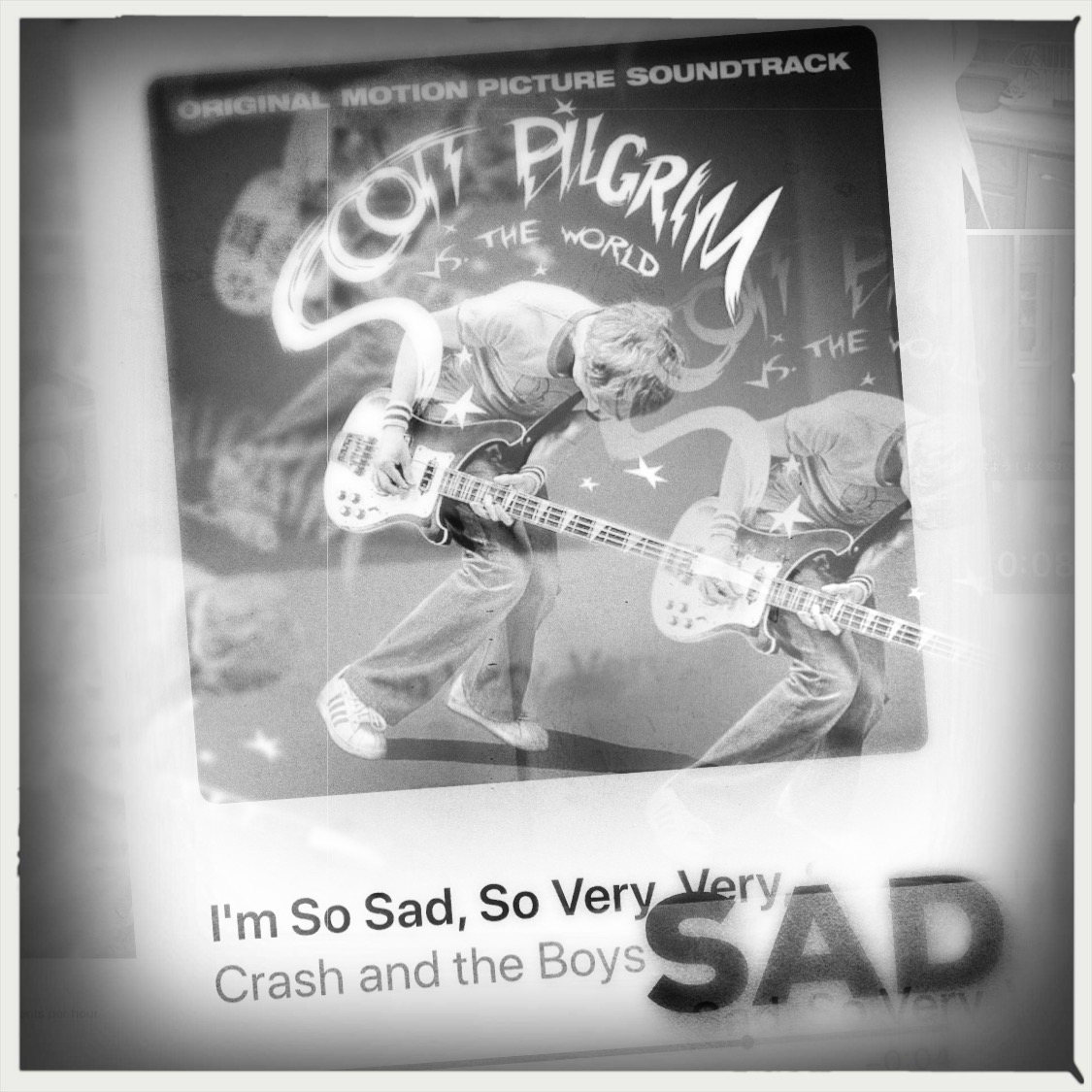Play It Again, Seratonin

I might get myself in a bit of trouble with my daughters with this post, but I recently sat in on the Brownie’s session with her therapist (she’s learning disabled). We were discussing ways to regulate moods. She used to have anger issues, and although those days are behind us, she still doesn’t know what to do with strong, negative feelings like disappointment, irritation, and frustration. I can’t recall exactly how the topic came up, but I used my “Heartbroken” playlist as an example to make a point.
This playlist used to be a point of contention for my older daughters. After the divorce, I filled this playlist with all the most painfully sad love songs I had in my vast music collection. I labeled it “Heartbroken”. Not surprisingly, most of them were country. On bad days, I would hit play and dive deep into the music before I could come up for air again. It was cathartic.
But my girls hated it.
Because of our current living arrangements, the Brownie wasn’t familiar with this “controversial” playlist. I listen with headphones on. She’s the youngest, so using the playlist as a positive example was a novel experience. I tried for years to get my older girls to understand how the playlist was actually helpful, but all they could see was that I was hurting—or more specifically, hurting myself.
What I, and the therapist, pointed out to the Brownie was that letting myself feel sad helped me deal with those emotions. What I was unable to explain to my girls all those years ago was that my feelings were a flood I feared would never stop, so I dammed them up. I didn’t dare let them spill over into my new, single parent life where so much was relying on me to be strong.
One day, I noticed that I felt better after listening to a particularly sad song, which reminded me that I have playlists for other emotions like anger and joy, so I created my monster list of songs so heavy with crushing sadness and betrayal that my daughters grew to loathe it when I hit play. Letting myself feel in touch with emotions I normally shied away from helped me wash them away. When the playlist was over, I was back in control.
In the early days, the playlist was quite brutal on my heart. Maybe there was a little bit of punishment mixed in with the sadness. Maybe a little bit of self-pity sprinkled in with the minor chords. My girls had cause for their heartfelt opposition.
However, over time, the playlist grew to become something wonderful. Yes, there were sad songs in there of love lost and paradise destroyed, but there were also songs with irony and wit. There were songs with clever lyrics that inspired, and synths and strings that lifted my sadness away. When I listen to the playlist, I give myself permission to feel things that I normally hide.
Letting yourself feel sad through music for a limited time can conversely lift your mood—even heal you—by which I mean, it can soothe your soul. Good music can boost serotonin levels in the brain, dramatically alleviating depression or anxiety. Dr. Alice Cash who uses music for therapy says her “Healing has to do with decreasing symptoms [of anxiety or depression], physically, physiologically, psychologically, emotionally, or spiritually.”¹ One study took the premise that “Music interventions have been used to reduce anxiety and distress and improve physiological functioning in medical patients” and examined music’s healing effects on people with heart conditions.² There are other studies. They all focus on the healing power of music to make physiological changes in our brains. The concept isn’t so far out there, though perhaps it hasn’t been touted as an optimum coping strategy, perfect for mix tapes and playlists before.
I don’t often listen to the entire “Heartbroken” playlist anymore. I don’t need to. I’m in a healthier place than I was in the years first after the divorce when I would listen to the playlist on repeat. However, once the playlist was finished playing (or I was finished playing it), I was ready to face the world. If you experiment with your own depression playlist, make sure to set limits. Touching an emotion to be free of it is therapy. Drowning in an emotion is wallowing. There is a fine line there you need to watch out for. Assuming you’re careful, though, you may find a new coping strategy to help you up when your spirits are low.
If you are looking for ideas to help you overcome suicidal depression, you should read my book. I step you through various methods I’ve used over the years.